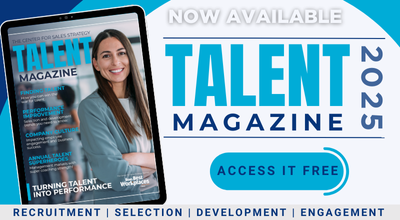 This is the first post in a four-part series on how managers can set new hires up for success.
This is the first post in a four-part series on how managers can set new hires up for success.
Onboarding new employees the right way is crucial in retaining them long-term.
According to an Aberdeen Group study, 86 percent of respondents felt that a new hire’s decision to stay with a company long-term is made within the first six months of employment. So you want to ensure you provide a challenging, but rewarding, experience that first six months and get it right immediately out of the gate! There are a few things you can do before and after your new hire’s first day to set them up for success and retain them.
A good onboarding program goes far beyond setting up the new hire’s workspace and providing a training program. It should include a good understanding of their innate talents and a strong coaching plan as well.
Match Talent to Task When Hiring
Analyze the position you are filling before you hire and determine what talents are necessary for success. This will help you to put the right people in the right positions, coach them in the right way, and reduce costly turnover.
Perform this job analysis and write down everything that makes the position unique. This will not only help you determine the skills and experience you need, but it will also help you identify the talents you need in your new hire.
Once you determine the “must have” talents – the ones you can’t live without – it’s time to search your talent bank for the candidates who have what it takes to be successful. Your talent bank should be chock-full of potential candidates, so you always have options when a position comes open. If you have access to a talent assessment created specifically for the position like the CSS Online Sales Talent Interview, it will allow you to identify an individual’s innate potential and predict success.
Schedule a Talent Feedback Call with a Talent Analyst
Once you determine the talents needed for success in the position and narrow down the candidates in your talent bank who could be a good fit, a good next step is to schedule a call with a certified Talent Analyst, if possible, to better understand the unique strengths and weaknesses of each person.
- Do you need an assertive, persistent, "go-getter" to work with difficult clients?
- Do you need a problem solver and creative thinker to work with complex accounts?
- Do you need a seller who can establish relationships and create repeat customers?
- All of the above?
It’s important to consider every behavior and characteristic you need for the position.
Discussing the intensity level of each talent with a Talent Analyst enables you to better understand how the candidate is wired and the behaviors you could expect to see on the job.
Why is this important?
It all starts with talent. In order for your coaching and training to pay off in performance growth, the person needs to have the underlying foundation of talent.
Before you hire someone, ask yourself these questions:
- Do their talents match up with the requirements of the position?
- Do they have weaknesses that could get in their way? If so, it is important to find the right workaround to help them manage the weakness.
If you hire someone who has the talents for the position and they practice using their talents, they can grow 10 times. If you hire someone who has to spend a lot of time using their weaknesses on the job, you will see far less growth, maybe about 10%.
Create Feedback Notes and Priority Strategies
Getting feedback on an individual’s talents also helps you to coach them in the right way after you hire them.
As a Talent Analyst, I often provide managers with feedback on the talents of the people they manage and help them determine the best coaching strategies to maximize their team’s talents and work around their weaknesses. Talent feedback provides you with a clear understanding of the behaviors you will observe with each person and the strategies that will help you grow and develop them. These priority strategies will likely be different for every person you manage because everyone is wired differently.
For example – you may manage someone who is highly competitive and loves keeping score. To motivate this person, you could implement a coaching strategy to give them a clear picture of what the win looks like for them and let them know how you are keeping score. Find a way to measure what you want them to do. On the other hand, you may manage someone who is not competitive at all, and the score does not motivate them. You would want to understand their hot buttons and create an entirely different priority strategy to motivate them.
Having a strong coaching plan ready before your new hire’s first day in the office will help you to coach them correctly from day one and show them that you care about their success.
This is the first blog in a four-part series focusing on setting your new hire up for success. Next week, we will cover how to build the kind of relationship with your new hire that will lead to stronger sales performance.



